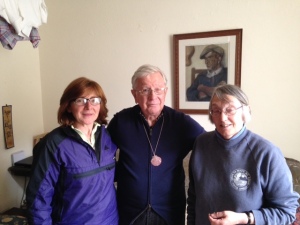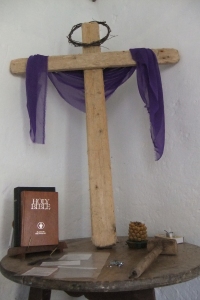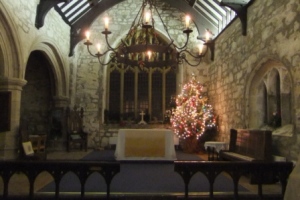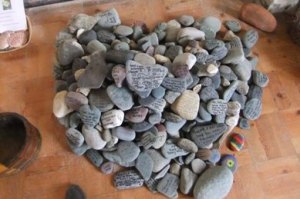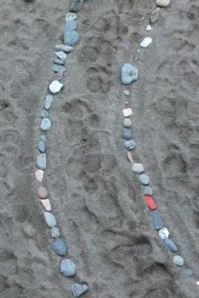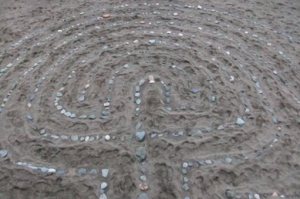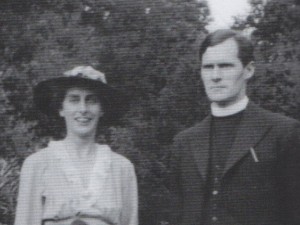Blogger’s note: While I was recovering from successful cataract surgery on both eyes, Susan Fogarty suggested a post about an ‘accident’ on a bridge in Aberdaron, Wales, R. S. Thomas’s last parish. I asked her to write it, which, with poetic sensitivity, she has done.
The sleepy seaside village of Aberdaron made headlines on the Welsh TV news on 2nd February, as an articulated wagon (known as an eighteen-wheeler in the US) had become wedged, almost destroying the 200-year-old bridge that straddles the small river running through the centre of the village.
The GPS navigator was made a scapegoat. The driver, without a signal, was lost. His intelligence forsaken, for the sake of ‘ease’, in using a machine.
What were the driver’s thoughts at the moment he approached the narrow bridge? Did he stop to think that the small bridge, built for farmers like RS Thomas’s Prytherch, sufficient to give them access with their donkey carts to the flour mill on the other side of the river, would have sufficient space for him?
Without meeting him, we have No Answer. Perhaps in defense he would say,
But the chemicals in
My mind were not
Ready, so I let
Him go on, dissolving
The word on my
Tongue.
For the purpose of this post, ‘Him’ refers to the machine (not God) and the articulated vehicle that could not articulate, “Stop, this is a bridge too far”. No words from the driver could stop the machine urging him onward.
. . . it takes time
To prepare a sacrifice
For the God.
How long did the driver maneuver backwards and forwards, smashing the parapets until the machine was trapped, pinned down, as a sacrifice on the altar of the bridge?
. . . Give yourself
To science that reveals
All, asking no pay
For it
And now, there was a price to pay for a man giving himself over to science. The core belief of RS in his poems on the theme of the machine, is that our machine culture, our addiction to science and technology that many believe has the answers to life, comes at a cost to ourselves.
……. . . Knowledge is power;
The old oracle
Has not changed……
until it loses its satellite signal, its data, its knowledge and fails . . . .
Then we reach for the road atlas, the illustrated journal of truth to guide us to our destination.
Meanwhile . . .
………… . . . Over the creeds
And masterpieces our wheels go.
The machines trundle over the masterpiece of the bridge, with no regard for the human beings who constructed it. A bridge that has served well the needs of a small community for two centuries, a bridge over and a bridge to, people and time. A bridge,
whose stone is the language
of its builders. Hereby the sea they said little.
But their message to the future
was: Build well.
And they did build well, for it was only the parapets that were dislodged, which are now being restored to their rightful place. Another week from now, the traffic will again trundle over the small bridge, and few, except the local people, would guess at the story of the night when this was a bridge too far for a man lost in his machine.
Poems of R. S. Thomas quoted in this post:
All of the quotes, beginning with “But the chemicals in” and concluding with “Over the creeds,” are from “No Answer,” H’m (1972), 7.
“whose stone is the language” – “Sarn Rhiw,” Destinations (1985), 29.



